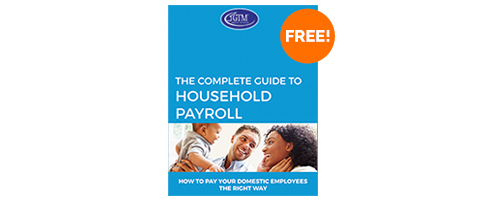Home Safety When Employing a Nanny
There are many home safety measures to ensure that your house is safe when you employ a nanny or other household worker in your home. Review these steps periodically to help you protect your family, friends, employees, and visitors from injury and harm.
Kitchen
- Frequently clean the exhaust hood and duct on the kitchen stove.
- Store cleaners, disinfectants and away from food and out of children’s reach.
- Neatly store utensils and knives and keep them out of children’s reach.
- Turn pot and pan handles away from stove fronts.
- Neatly store cupboard contents to prevent items from falling.
- Immediately wipe up spills.
- Store plastic grocery and shopping bags out of children’s reach.
Entrances and Stairways
- Ensure entrances, halls and stairways are adequately lighted to prevent trips and falls.
- Keep steps and railings well maintained and clear of objects and tripping hazards.
- Establish at least two exits that are designated fire exits and always kept clear.
- Use a child’s gate at the top and bottom of the stairs if a toddler is living in the home. Accordion-type gates are dangerous as a child’s head can easily get trapped in them.
- Establish in your household policy when and for whom your employee should open the front door. Arranged visits by service people should always be told to your employee ahead of time.
Living Areas
- Keep electrical cords away from carpets. Make sure cords are in good condition and not frayed or overloaded.
- Ensure long electrical blinds and drapery cords are beyond a child’s reach.
- Properly insulate all wires in the house.
- Use safety outlet covers on all unused electrical outlets.
- Keep furniture away from windows to prevent children from falling out. Window screens will not prevent a child from falling out of the window.
- Cover sharp furniture edges.
- Cover radiators and pipes to protect against burns.
- Locate lamps near beds to prevent tripping in the dark.
- Ensure all houseplants are safe. Some plants are toxic and need to be placed out of children’s reach.
Bathrooms
- Store medicines and vitamins out of children’s reach.
- Set your home’s hot water temperature at the safe temperature of 120°F. If the temperature can’t be altered (i.e., rented homes), then install an anti-scald device on the faucet.
- Install a toilet-lid locking device in households with small children.
Nursery
- Fit the crib mattress snugly against the crib’s sides. No more than two fingers’ distance should exist between the mattress and the crib railing.
- Ensure the crib bars are two inches or less apart. Any more space and a child could get caught between the crib’s bars.
- Always keep the crib rails in the “up” position.
Garage
- Store all tools and chemicals, including those used for gardening, automotive, and lawn care, in a locked container.
- Keep recycling containers holding glass and metal far from children’s reach.
Yard
- Check that outdoor play equipment is safe with no loose parts or rust.
- Ensure surfaces around swing sets and play equipment are soft to absorb shock from falls. Good surface equipment includes sand and wood chips.
- Block access to the swimming pool for small children. Keep dangerous pool cleaning chemicals in a locked location.
Fire Safety Checks
- Place smoke and carbon monoxide detectors on each level of the home and near sleeping areas.
- Clean and check detectors monthly to ensure that they are operating correctly.
- Replace batteries in detectors at least once a year.
- Replace detectors every ten years as they become less sensitive over time.
- Keep one or more fire extinguishers in the house and ensure all household members and employees know how to operate them.
- Create a fire escape plan for your home and practice the plan at least twice a year.
Download The Complete Guide to Household Payroll. It will help you every step of the way and explain everything you need to do. There’s even a handy checklist and payroll calendar at the end of the guide to use as references.
Stay up to date with our Free Newsletter
Free Resources on Household Employment
- Nanny Tax Calculator
- Nanny Tax Guide
- Tax Forms
- Tax Calendar for Household Employment
- Free eBook Chapter: Managing Payroll and Taxes
- Payroll & Holiday Calendar
- Guides & Checklists
- Employer Responsibilities
- Domestic Workers' Rights
- Workers' Compensation Requirements
- Government Websites for Household Employers



